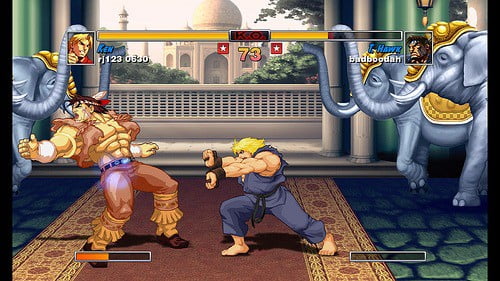Since the 1950s, heads-up displays (HUDs) have been used to visualize data for military aviation professionals without their having to take their eyes away from their typical viewpoints. The technology has been refined by both the Royal and U.S. Navy, so much so that it has now been adopted for commercial airline use as well as for automobiles and more recently, gaming.
In gaming terms, a HUD is often used as a means of relaying information to a player within the game’s user interface. The type of data displayed within a gaming HUD understandably varies game-to-game, so let’s take a look at the way HUDs have transitioned into popular gaming culture through the decades.
Gaming franchises such as “Street Fighter” and “Tekken,” which were classed within the “Beat ‘em up” gaming genre, were immensely popular in the 1990s. Capcom first released “Street Fighter” on August 30, 1987, while Namco released the first edition of Tekken a while later in 1994. The latter is now regarded as the best-selling fighting game in franchise history while “Street Fighter” has sold an eye-watering 39 million copies in total.
Both these games relied heavily on HUDs to convey the health of each fighter during each duel and to also make players aware when special moves and powers were available. This incorporation of HUD elements into the user interface and the actual fabric of the game itself was the first example of what is now termed as a “diegetic interface.”

Undoubtedly, one of the most successful uses of a fully diegetic HUD interface within a gaming world came is the 2008 hit game “Dead Space,” which was released on the PlayStation 3, Xbox 360, and PC. Developed by Visceral Games, which was recently closed by Electronic Arts, this sci-fi survival horror genre game has sold more than two million copies, which is very impressive considering the game’s niche. In the game, as the protagonist, almost every piece of information made available to engineer Isaac Clarke is given to other characters. For example, Isaac’s health levels are displayed to his colleagues to enable them to monitor his heart rate, etc. Furthermore, in-game menus and crafting systems are displayed as computer screens on Isaac as well as the terminals in and around the buildings.
HUDs in online gaming has created an incredibly controversial argument in one sphere, in particular, online poker. In online poker, HUDs can be used to display the statistics of each player sitting at your poker table to help you pinpoint strong and weak players. Obviously, the use of a HUD for online poker players is an exceptionally useful tool, especially for those who play semi professionally or full-time to earn a living. However, the argument for a HUD in online poker is that not all players have the capability to utilize the statistics available to their full advantage — being able to keep your cool in the heat of battle and use the data to inform your decision-making is the real skill here.
Today, it’s almost inconceivable to think that video and online games don’t have some form of HUD to guide your gameplay. However, those games that don’t use HUDs are very much the exception to the rule. These titles also tend to be ones that do so consciously to enable players to interpret their own gaming world. With virtual and augmented reality rapidly advancing, one wonders whether this will play a role in future HUDs in new VR gaming.

